Looking for eco-friendly toy materials? Look no further! Our 10 steps will help you choose the best options.
From researching Montessori Toy Safety Standards to considering natural and organic materials, we’ll guide you towards non-toxic, sustainable, and ethical choices.
Say goodbye to plastics and synthetic materials, and hello to a safer and greener playtime experience. Let’s embark on this journey together!
Key Takeaways
- Non-toxic and chemical-free toys reduce the risk of exposure to harmful chemicals and promote a safe and healthy play environment.
- Sustainable and renewable resources should be prioritized for eco-friendly toy materials to promote responsible sourcing and reduce environmental impact.
- The use of recycled and upcycled materials in toy manufacturing has a positive environmental impact by reducing waste and conserving resources.
- Opting for water-based and non-VOC paints for eco-friendly toys helps minimize the release of harmful chemicals into the environment and ensures safer indoor air quality.
Research Montessori Toy Safety Standards
We researched the Montessori toy safety standards to ensure that our eco-friendly toy materials meet the highest level of safety requirements. The Montessori toy manufacturing process emphasizes the use of non-toxic and environmentally friendly materials. This is crucial as children are prone to putting toys in their mouths, and the last thing we want is for them to be exposed to harmful chemicals.
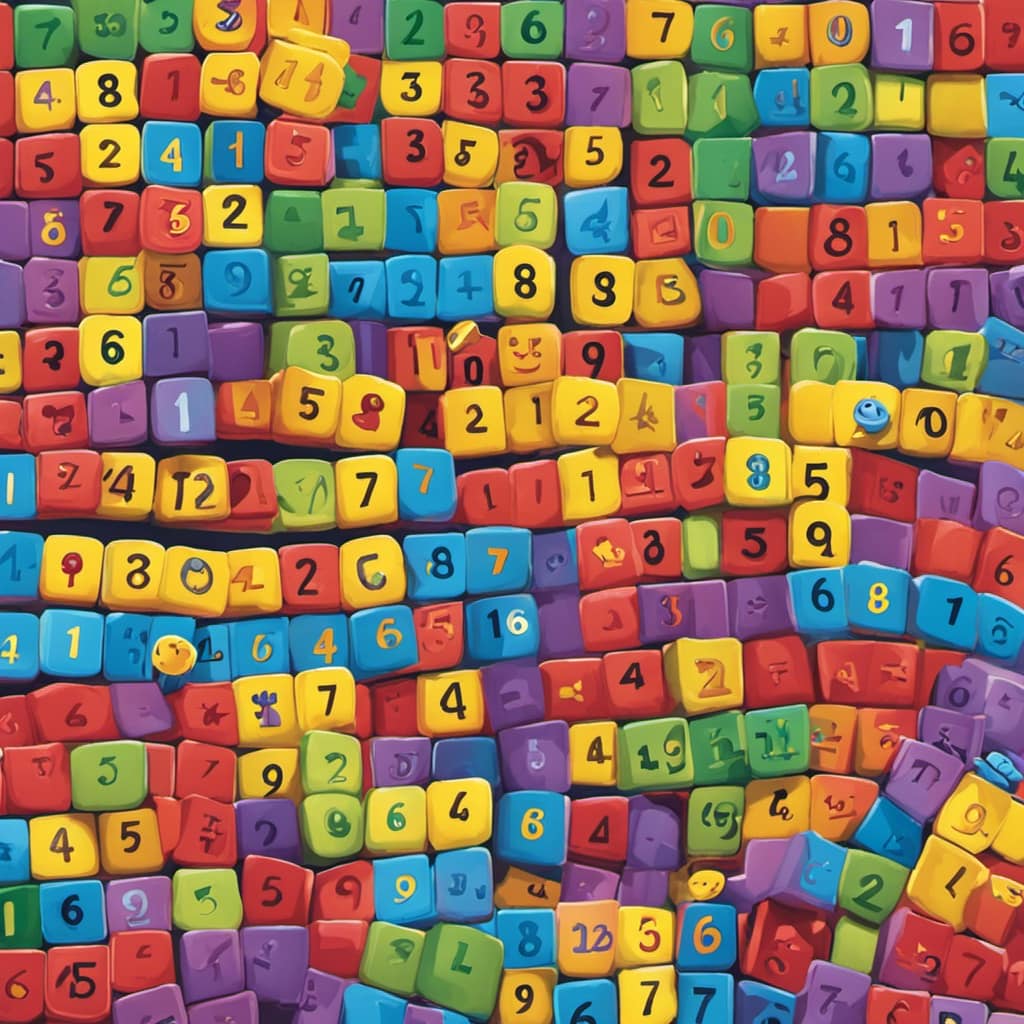
By adhering to these safety standards, we can provide parents with peace of mind, knowing that our toys are safe for their children to play with.
Additionally, the importance of eco-friendly toy materials can’t be overstated. Using sustainable and renewable resources minimizes our impact on the environment and contributes to a healthier planet for future generations.
Transitioning into the next section, let’s now consider the benefits of using natural and organic materials in toy manufacturing.
Consider Natural and Organic Materials
When considering eco-friendly toy materials, it’s important to take into account the benefits of natural and organic materials.

Natural materials such as wood, cotton, and bamboo are renewable resources that have minimal impact on the environment.
Additionally, choosing toys made from organic materials ensures that harmful chemicals, such as lead and phthalates, are avoided, providing a safer play experience for children.
Benefits of Natural Materials
Natural materials offer numerous benefits when considering eco-friendly toy materials. By using natural and organic materials in the production of toys, we can promote eco consciousness and contribute to a healthier environment. Here are some key benefits of using natural materials:
- Sustainability: Natural materials are often derived from renewable sources, reducing the strain on our planet’s resources.
- Biodegradability: Toys made from natural materials can decompose over time, minimizing their impact on landfills.
- Non-toxicity: Natural materials are less likely to contain harmful chemicals, ensuring the safety of children during play.
By opting for toys made from natural materials, we can support sustainable practices, reduce waste, and prioritize the well-being of children.

However, it’s also important to consider the avoidance of harmful chemicals in toy materials to further safeguard the health of both children and the environment.
Avoiding Harmful Chemicals
How can we ensure the safety of children and the environment by selecting eco-friendly toy materials that avoid harmful chemicals? One way is to consider natural and organic materials as alternatives to conventional options. These eco-friendly alternatives not only reduce the exposure of children to harmful chemicals, but also minimize the negative impact on the environment.
To help you make informed choices, here is a table comparing common toy materials and their eco-friendliness:
| Toy Material | Eco-Friendliness Rating |
|---|---|
| Plastic | Low |
| Wood | High |
| Organic Cotton | High |
Avoid Plastics and Synthetic Materials
To select eco-friendly toy materials, we should avoid using plastics and synthetic materials. Plastics and synthetic materials are derived from non-renewable resources and are known to release harmful chemicals into the environment during production and disposal.

Instead, we can choose alternative materials that are more sustainable and safe for children. Here are some research-backed alternatives:
-
Natural Wood: Wooden toys are a great option as they’re made from renewable resources and can be biodegradable.
-
Organic Fabrics: Toys made from organic cotton or hemp are free from harmful chemicals and are gentle on the environment.
-
Recycled Materials: Toys made from recycled materials, such as recycled plastic or cardboard, help reduce waste and promote a circular economy.
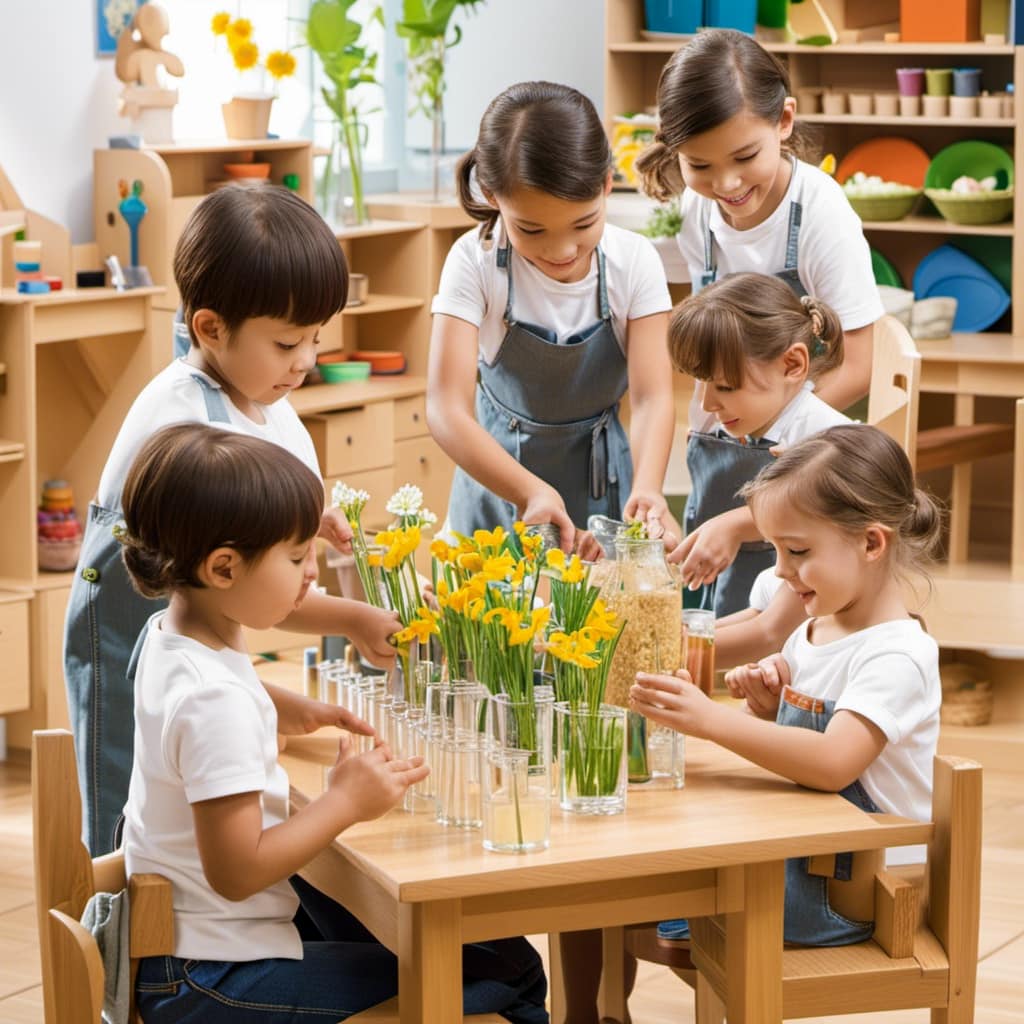
Look for Non-Toxic and Chemical-Free Options
When selecting eco-friendly toy materials, it’s crucial to look for options that are non-toxic and chemical-free. By opting for natural materials only, we ensure the safety of children who come into contact with these toys.
Additionally, choosing non-toxic and chemical-free options helps to reduce the environmental impact of toy production and disposal.
Natural Materials Only
We prioritize selecting natural materials for eco-friendly toys, ensuring they’re non-toxic and free from chemicals. By choosing natural materials, we can promote a safer and healthier play environment for children while also minimizing the impact on the environment.
Here are some reasons why we advocate for natural materials:
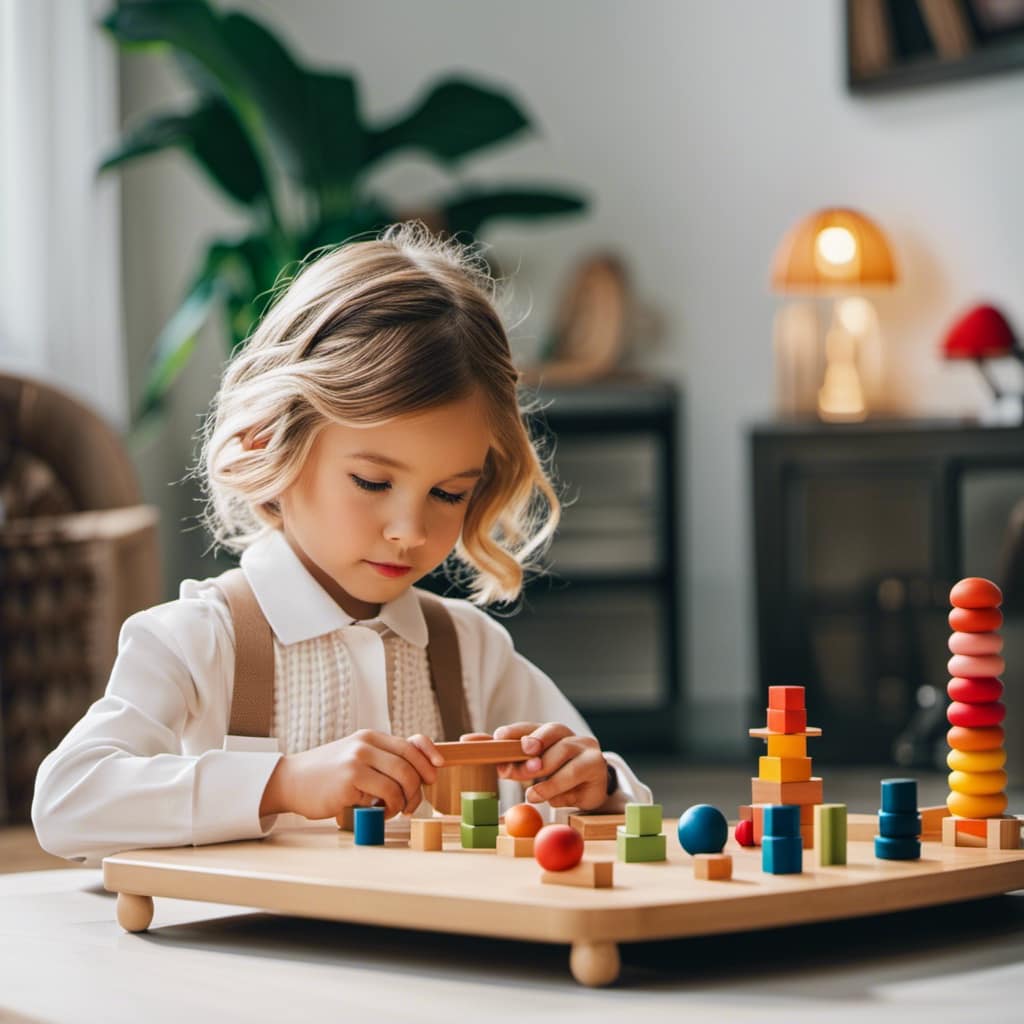
-
Reduced exposure to toxins: Natural materials, such as wood, organic cotton, and natural rubber, provide non-toxic alternatives to plastic and synthetic materials commonly found in toys.
-
Sustainable sourcing: Natural materials can be responsibly harvested, supporting eco-friendly manufacturing practices and reducing the depletion of natural resources.
-
Biodegradability: Unlike synthetic materials, natural materials are biodegradable, meaning they can decompose over time, reducing waste accumulation and environmental pollution.
Safety for Children
As advocates for eco-friendly toys, we consistently prioritize the safety of children by seeking out non-toxic and chemical-free options. When selecting toys for children, it is crucial to consider the potential harm that toxic materials can cause. By choosing toys made from toxic-free options, we can ensure that our children are not exposed to harmful chemicals that could negatively impact their health and well-being.
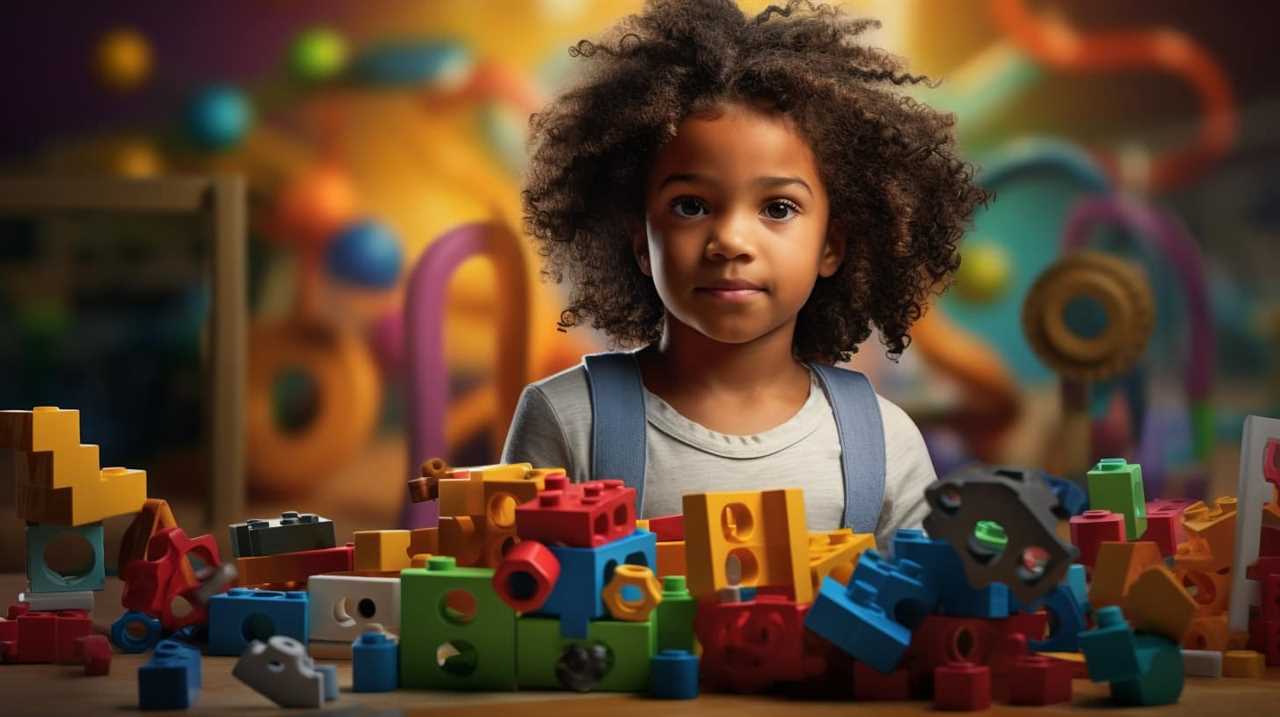
To assist you in making informed choices, we have provided a table below that highlights the importance of non-toxic and chemical-free toys in eco-friendly manufacturing:
| Benefits of Non-Toxic and Chemical-Free Toys |
|---|
| 1. Reduces the risk of exposure to harmful chemicals |
| 2. Promotes a safe and healthy play environment |
| 3. Supports sustainable and eco-friendly manufacturing practices |
Environmental Impact Reduction
To reduce the environmental impact, we actively seek out non-toxic and chemical-free options when selecting toy materials. Our commitment to Montessori toy safety and promoting a healthy environment for children guides our decision-making process. When it comes to choosing materials, we prioritize natural options that are sustainable and biodegradable.
Here are three reasons why opting for non-toxic and chemical-free materials is crucial:
-
Protecting children’s health: Non-toxic materials ensure that children aren’t exposed to harmful chemicals, reducing the risk of allergies, respiratory problems, and other health issues.

-
Preserving the environment: Chemical-free materials avoid polluting the air, water, and soil during production, use, and disposal, contributing to a cleaner and healthier planet.
-
Promoting sustainability: Natural materials like wood, organic cotton, and bamboo are renewable resources, minimizing resource depletion and supporting eco-friendly practices.
Choose Sustainable and Renewable Resources
The use of sustainable and renewable resources is essential when selecting eco-friendly toy materials. Sustainable manufacturing practices ensure that the resources used are responsibly sourced and don’t deplete the environment.
By choosing materials that are renewable, such as bamboo or organic cotton, we can reduce the impact on natural resources and promote a healthier planet.

Additionally, renewable energy sources, such as solar or wind power, should be utilized during the manufacturing process to further minimize the carbon footprint.
It’s important to consider the entire life cycle of a toy, from production to disposal, to ensure that it aligns with sustainable and renewable practices.
Prioritize Recycled and Upcycled Materials
When considering eco-friendly toy materials, it’s important to prioritize recycled and upcycled materials due to their positive environmental impact.
Recycling and upcycling not only reduce waste and conserve resources, but they also help to decrease the need for new raw materials and the energy required for their production.

Environmental Impact of Materials
We prioritize using recycled and upcycled materials for their lower environmental impact. By choosing these materials, we contribute to sustainable manufacturing practices and reduce our carbon footprint.
Here are three key reasons why we prioritize recycled and upcycled materials:
-
Resource Conservation: Using recycled and upcycled materials helps to conserve natural resources by reducing the need for virgin materials extraction.
-
Energy Savings: The production of recycled and upcycled materials requires less energy compared to the manufacturing of new materials, resulting in lower greenhouse gas emissions.

-
Waste Reduction: By utilizing materials that have already been used or repurposed, we help divert waste from landfills, contributing to a cleaner environment.
Benefits of Recycling/Upcycling
Continuing our commitment to sustainability, let’s explore the benefits of prioritizing recycled and upcycled materials for eco-friendly toy manufacturing. By using recycled and upcycled materials, we can significantly reduce waste and minimize the environmental impact of toy production.
Recycling and upcycling not only help divert materials from landfills but also conserve energy and resources that would otherwise be used in the production of new materials. This process reduces the need for raw materials extraction, which often involves destructive mining practices and contributes to deforestation. Additionally, it helps to decrease greenhouse gas emissions and air pollution associated with manufacturing processes.
To further highlight the benefits of recycling and upcycling, let’s take a look at the following table:
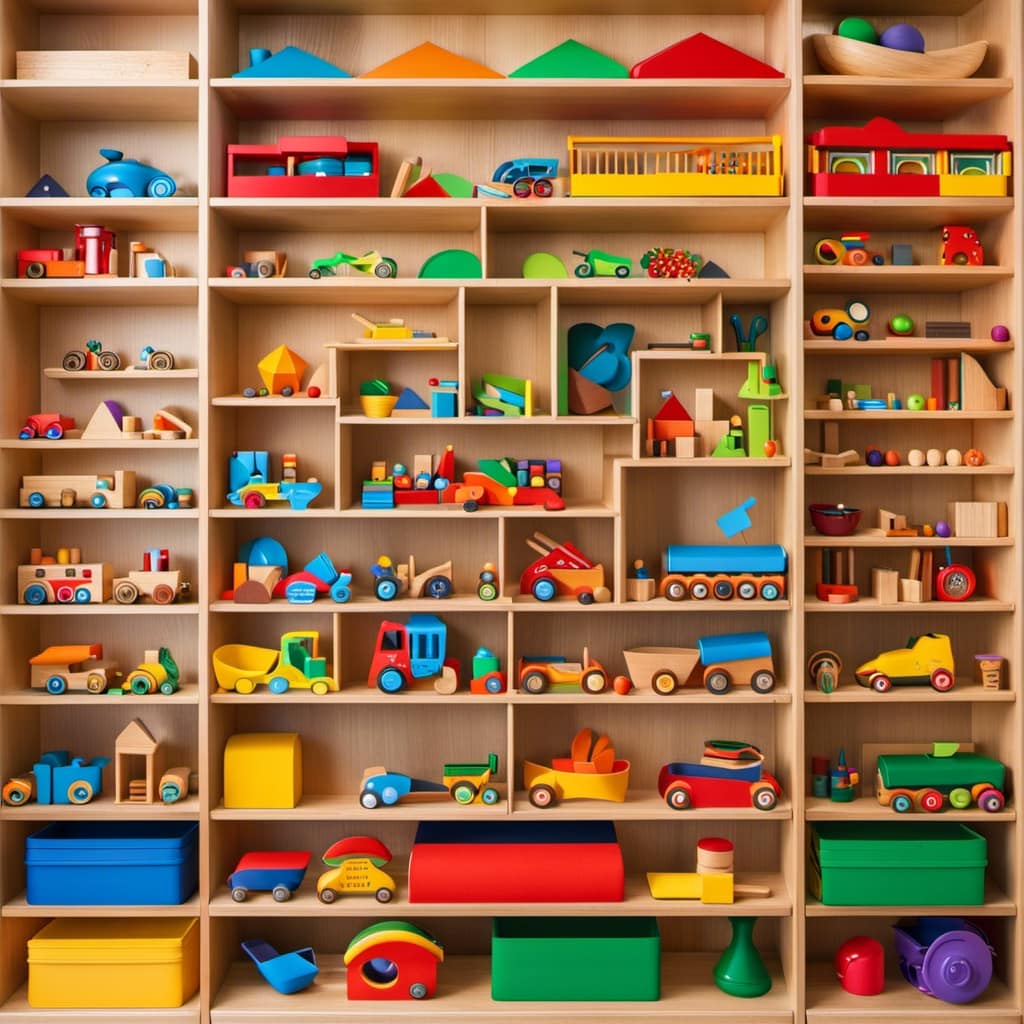
| Benefits of Recycling/Upcycling |
|---|
| Reduces waste |
| Conserves energy and resources |
| Minimizes environmental impact |
| Decreases greenhouse gas emissions |
Choosing Sustainable Alternatives
To continue our commitment to sustainability, let’s explore how we can choose sustainable alternatives by prioritizing the use of recycled and upcycled materials in toy manufacturing. By opting for sustainable manufacturing practices, we can significantly reduce the environmental impact of toy production.
Here are three key reasons why we should prioritize recycled and upcycled materials:
-
Conservation of resources: Using recycled materials helps conserve natural resources like timber, water, and energy, reducing the need for raw material extraction and production processes.
-
Reduction of waste: By upcycling materials, we can give a new life to items that would otherwise end up in landfills, minimizing waste generation and promoting a circular economy.

-
Eco-friendly packaging: Choosing toys with eco-friendly packaging made from recycled or biodegradable materials decreases the amount of plastic waste and contributes to a cleaner environment.
Opt for Water-based and Non-VOC Paints
When selecting eco-friendly toy materials, it’s important to opt for paints that are water-based and free from volatile organic compounds (VOCs). Water-based paints offer several advantages over traditional solvent-based paints. They’ve lower levels of toxic emissions, making them safer for both the environment and human health. Water-based paints also have a lower odor, reducing the risk of respiratory issues and allergic reactions.
On the other hand, VOC paints contain harmful chemicals that can negatively impact indoor air quality and contribute to various health problems, such as respiratory irritation and allergies. By choosing water-based paints, we can minimize the release of harmful chemicals into the environment and create a safer and healthier play environment for children.
Now, let’s move on to the next step: checking for safety certifications and labels.

Check for Safety Certifications and Labels
Our first step is to examine the safety certifications and labels of the eco-friendly toy materials. Safety certifications and labels play a crucial role in ensuring the well-being of children during playtime. Here are some key reasons why researching safety certifications and labels is important:
-
Protection from hazardous materials: Safety certifications and labels guarantee that the toy materials meet specific safety standards and don’t contain harmful substances such as lead or phthalates.
-
Quality assurance: Certifications and labels indicate that the toys have undergone rigorous testing and comply with safety regulations, assuring parents of their durability and longevity.
-
Peace of mind for parents: By choosing toys with proper safety certifications and labels, parents can rest assured that their child’s health and safety are being prioritized.
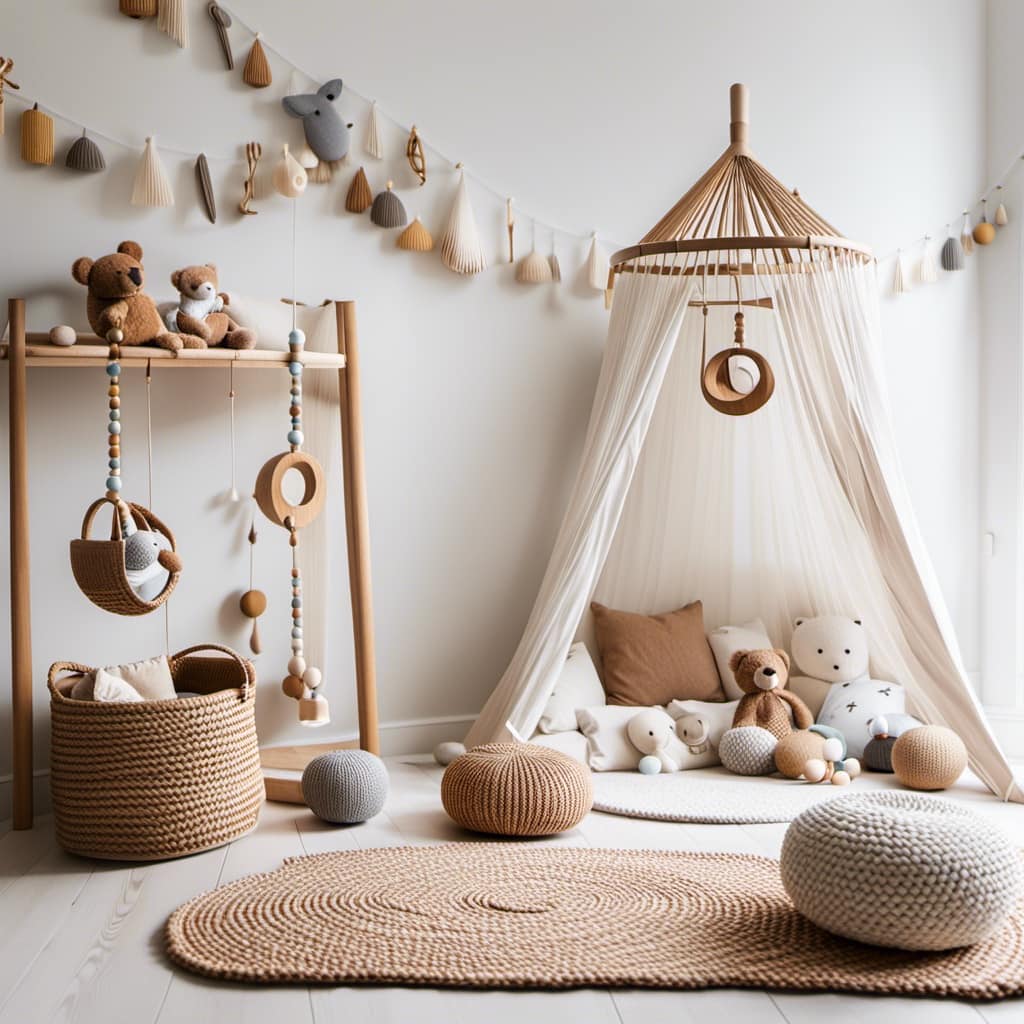
Consider Durability and Longevity
Considering the durability and longevity of eco-friendly toy materials is crucial in making an informed purchasing decision. When evaluating the durability of a toy, it’s important to take into account its construction and the materials used. Look for toys made from sturdy materials such as wood, metal, or recycled plastic, as they’re more likely to withstand rough play and last longer.
Additionally, consider the longevity of the toy in terms of its ability to engage and entertain a child for an extended period of time. Toys that offer multiple play options or can be adapted as a child grows are more likely to provide long-term value.
While price is a factor to consider, it shouldn’t be the sole determining factor. Instead, weigh the cost against the durability and longevity of the toy.
Lastly, when evaluating eco-friendly certifications, look for reputable labels such as FSC-certified wood or the Green Seal, which indicate that the toy meets certain environmental standards.
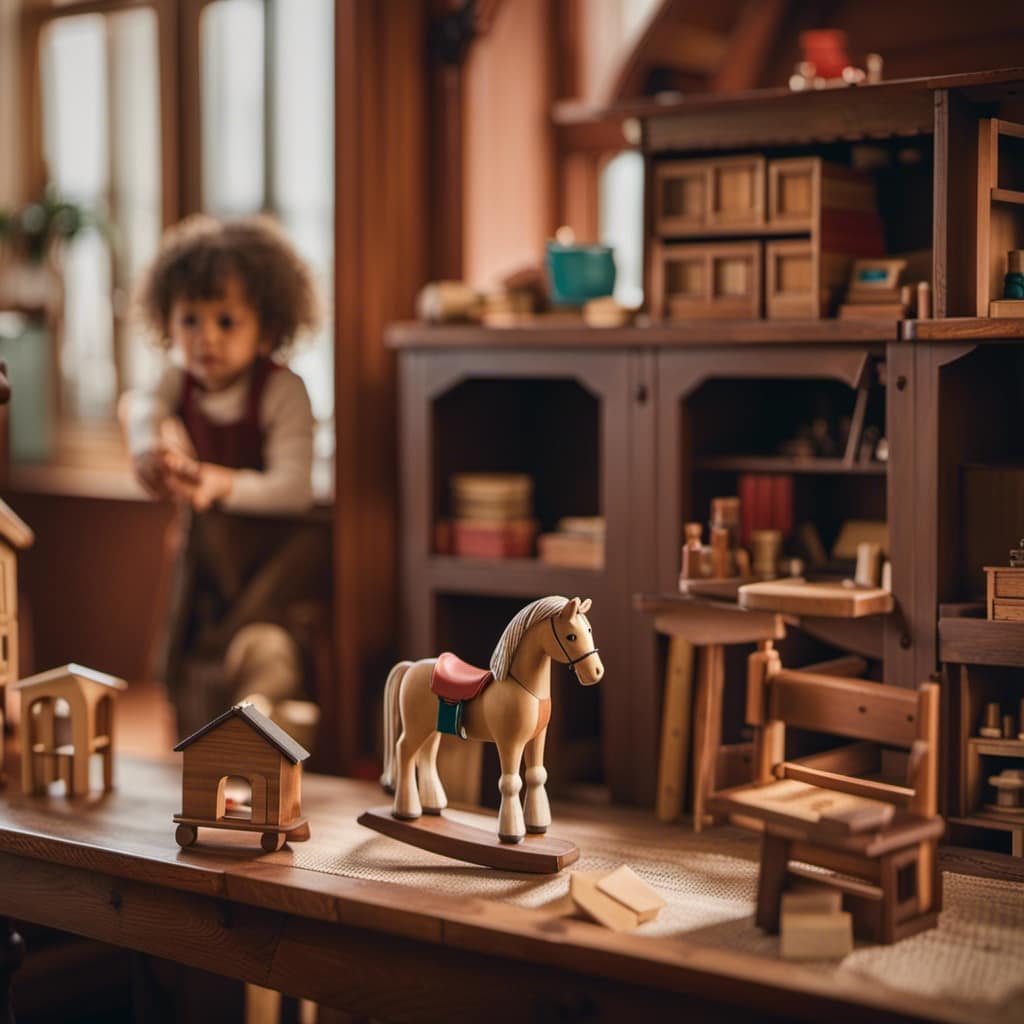
Support Ethical and Fair Trade Practices
To ensure eco-friendly toy materials, we prioritize supporting ethical and fair trade practices. By choosing toys made from ethically sourced materials, we can ensure that workers involved in the production process are treated fairly and working under safe conditions. Fair trade certification provides further assurance that the toys are made in a socially responsible manner, with fair wages and respect for human rights.
Incorporating ethical sourcing and fair trade practices into our toy selection process allows us to contribute to a sustainable and just supply chain. This not only benefits the workers involved but also aligns with our desire to serve others and make a positive impact on the world.
Frequently Asked Questions
Are There Any Specific Safety Certifications or Labels That I Should Look for When Selecting Eco-Friendly Toy Materials?
When selecting eco-friendly toy materials, we should look for safety certifications or labels. These can provide assurance that the materials have undergone testing and meet certain standards for safety and sustainability.
Can You Provide Some Examples of Sustainable and Renewable Resources That Are Commonly Used in Eco-Friendly Toys?
Examples of sustainable and renewable resources commonly used in eco-friendly toys include bamboo, organic cotton, recycled plastic, and natural rubber. These materials offer numerous benefits such as reducing waste, promoting biodiversity, and minimizing environmental impact.

What Are Some Alternative Options to Plastic and Synthetic Materials That I Can Consider When Selecting Eco-Friendly Toys?
When selecting eco-friendly toys, it is important to consider natural alternatives and biodegradable options as alternatives to plastic and synthetic materials. These options help reduce environmental impact and promote sustainability.
How Can I Ensure That the Paints Used on Eco-Friendly Toys Are Water-Based and Free From Volatile Organic Compounds (Vocs)?
To ensure water-based paint alternatives and VOC-free materials in eco-friendly toys, we can carefully read product labels, choose toys made from natural materials, and consult with manufacturers or retailers who prioritize environmental safety.
What Are Some Factors to Consider in Terms of Durability and Longevity When Selecting Eco-Friendly Toy Materials?
Factors to consider when selecting eco-friendly toy materials include durability and longevity. Alternative options to plastic and synthetic materials include sustainable and renewable resources such as bamboo, wood, organic cotton, and natural rubber.
Conclusion
In conclusion, selecting eco-friendly toy materials is crucial for the well-being of our children and the environment.

One interesting statistic to highlight is that on average, a child in the United States owns more than 70 toys, contributing to a significant amount of waste.
By choosing toys made from natural and organic materials, avoiding plastics and synthetic materials, and opting for sustainable resources, we can reduce our ecological footprint and create a healthier and safer play environment for our children.











